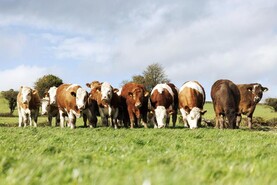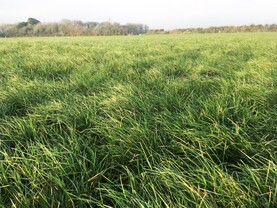Now that most farms have received closed to 50mm of rainfall during the past week, the drought situation that was in place for many farmers can be considered broken.
These farms now need to readjust plans to get the farm and grass cover back on track.
Rotation still needs to still be slowed. Holding the rotation at 25 days will allow grass to get some cover and hold moisture and also allow some root mass to develop.
Paddocks that were badly affected by the drought will have lost up to half the available grass as it will have died off and started to decay on the ground.
The moisture should start to green up these fields again. However, growth and yield will still be low.
Paddocks grazed over the last week or two and low covers should take off now, but it is important not to overestimate DM% as the rapid growth will lead to lower DM content in the grass (16% or less).
With all this in mind, supplementation will still be important and getting the farm cover to 160kg/cow should be the target before there is any drastic reduction in supplementation.
Fertiliser
If the nitrogen (N) is out and up to date there is no panic on going with the next round. Soil will have a good N reserve built up as the plants were unable to fully utilities applied N over the last month.
Nitrate poisoning was a problem for small number of farmers following the drought in the summer of 2018.
Soil nitrogen level rise during a drought and when rain comes and you see the rapid growth rates this can lead to high levels of nitrogen accumulating in the leaves.
This will not be a problem for most farms. Where there may be a risk is in cool, cloudy weather where stock are grazing relatively new grass that got high levels of nitrogen and very little utilisation during the drought.
Reducing risk
To reduce this possible risk, you can test suspect pastures with a nitrate kit, use longer rotations or feed cows other forages such as silage before grazing suspect pastures. Don’t have cows hungry going into high-risk pasture.
Paddocks that have gone to stem due to the stress of the moisture deficit which also may have a high level of dead material decaying at the butt of the sward can benefit from a run of the mower straight away after grazing.
This will help reset the field, removing the dead material and low-quality feed from the plant and get fresh leaf growing back. However, avoid topping a high percentage of your grazing block as you will waste feed and slow down regrowth.






 This is a subscriber-only article
This is a subscriber-only article











SHARING OPTIONS: